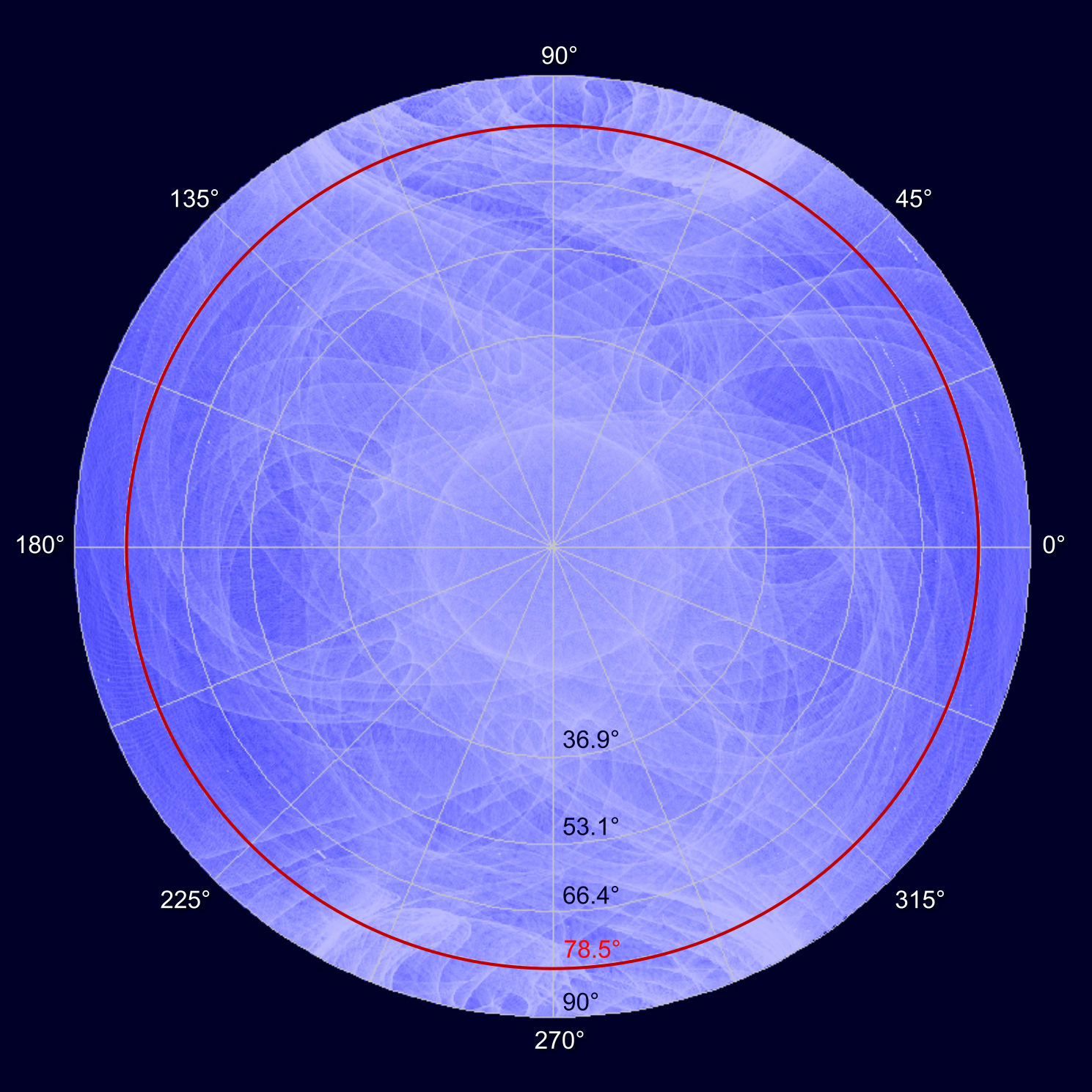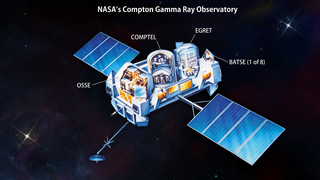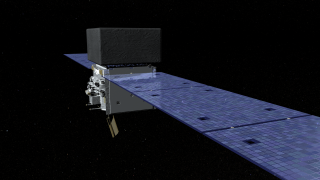Fermi Traces a Celestial Spirograph
Now a Fermi scientist has transformed LAT data of a famous pulsar into a mesmerizing movie that visually encapsulates the spacecraft's complex motion.
Pulsars are neutron stars, the crushed cores of massive suns that destroyed themselves when they ran out of fuel, collapsed and exploded. The blast simultaneously shattered the star and compressed its core into a body as small as a city yet more massive than the sun. One pulsar, called Vela, shines especially bright for Fermi. It spins 11 times a second and is the brightest persistent source of gamma rays the LAT sees.
The movie renders Vela's position in a fisheye perspective, where the middle of the pattern corresponds to the central and most sensitive portion of the LAT's field of view. The edge of the pattern is 90 degrees away from the center and well beyond what scientists regard as the effective limit of the LAT's vision. The movie tracks both Vela's position relative to the center of the LAT's field of view and the instrument's exposure of the pulsar during the first 51 months of Fermi's mission, from Aug. 4, 2008, to Nov. 15, 2012.
The pattern Vela traces reflects numerous motions of the spacecraft. The first is Fermi's 95-minute orbit around Earth, but there's another, subtler motion related to it. The orbit itself also rotates, a phenomenon called precession. Similar to the wobble of an unsteady top, Fermi's orbital plane makes a slow circuit around Earth every 54 days.
In order to capture the entire sky every two orbits, scientists deliberately nod the LAT in a repeating pattern from one orbit to the next. It first looks north on one orbit, south on the next, and then north again. Every few weeks, the LAT deviates from this pattern to concentrate on particularly interesting targets, such as eruptions on the sun, brief but brilliant gamma-ray bursts associated with the birth of stellar-mass black holes, and outbursts from supermassive black holes in distant galaxies.
The Vela movie captures one other Fermi motion. The spacecraft rolls to keep the sun from shining on and warming up the LAT's radiators, which regulate its temperature by bleeding excess heat into space.
Watch this video on YouTube.



Related
For More Information
Credits
Scott Wiessinger (USRA): Video Editor
Scott Wiessinger (USRA): Producer
Eric Charles (SLAC National Accelerator Laboratory): Scientist
Francis Reddy (Syneren Technologies): Writer
NASA's Goddard Space Flight Center. However, individual items should be credited as indicated above.
https://svs.gsfc.nasa.gov/11205
Mission:
Fermi Gamma-ray Space Telescope
Data Used:
Fermi/LAT
Event ListThis item is part of these series:
Narrated Movies
Astrophysics Visualizations
Astrophysics Stills
Astrophysics Features
Goddard TV Tape:
G2013-022 -- Fermi Vela Cosmic Spirograph
Keywords:
SVS >> HDTV
SVS >> Music
SVS >> Neutron Star
GCMD >> Earth Science >> Spectral/Engineering >> Gamma Ray
SVS >> Astrophysics
SVS >> Pulsar
SVS >> Edited Feature
SVS >> Space
SVS >> Fermi
SVS >> Star
NASA Science >> Universe
GCMD keywords can be found on the Internet with the following citation: Olsen, L.M., G. Major, K. Shein, J. Scialdone, S. Ritz, T. Stevens, M. Morahan, A. Aleman, R. Vogel, S. Leicester, H. Weir, M. Meaux, S. Grebas, C.Solomon, M. Holland, T. Northcutt, R. A. Restrepo, R. Bilodeau, 2013. NASA/Global Change Master Directory (GCMD) Earth Science Keywords. Version 8.0.0.0.0













